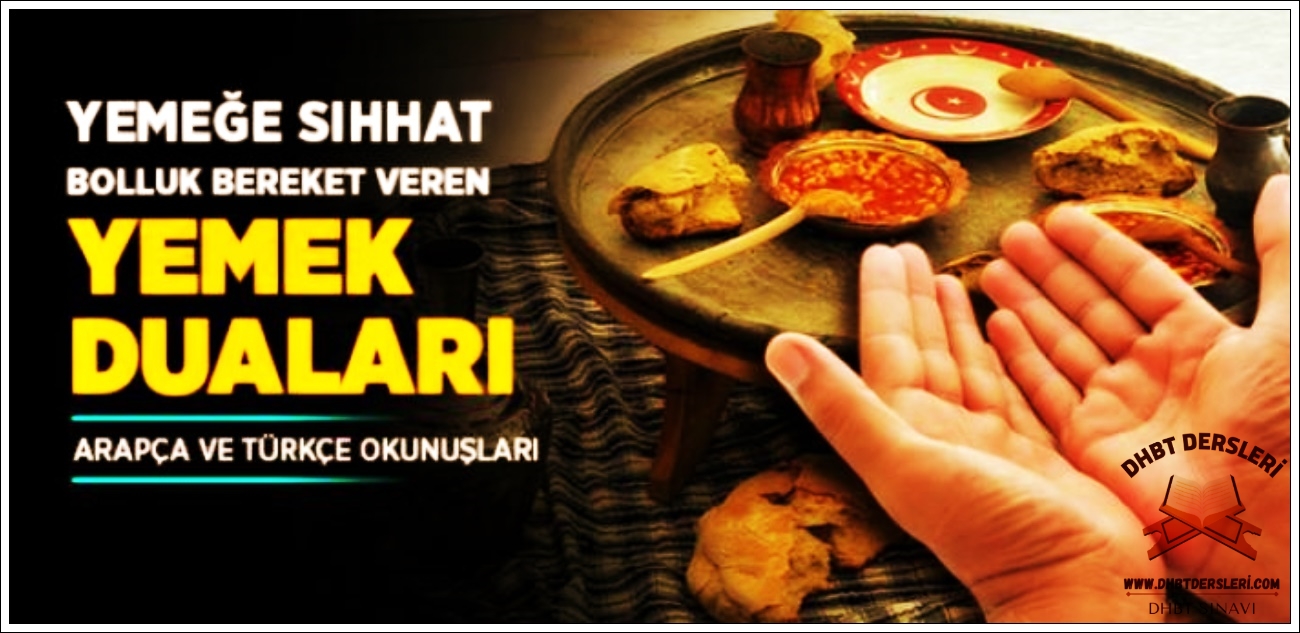The Qur’anic viewpoint regards gender as a part of humanity and does not focus on it separately.
What is the Position of Women in İslam?
Both males and females are considered to be essential elements of life as stated in the following âyah:
“O men! Behold, We have created you all out of a male and a female, and have made you into nations and tribes, so that you might come to know one another. Verily, the noblest of you in the sight of Allah is the one who is most deeply conscious of Him. Behold, Allah is all-knowing, all-aware.” (Hujurát 49:13)
Being a woman or a man does not define one’s supremacy over the other. Both genders have equal opportunity to seize eternal salvation:
“Verily, for all men and women who have surrendered themselves unto Allah, and all believing men and believing women, and all truly devout men and truly devout women, and all men and women who are true to their word, and all men and women who are patient in adversity, and all men and women who humble themselves [before Allah], and all men and women who prove their loyalty to Allah by giving in charity, and all self-denying men and self-denying women, and all men and women who are mindful of their chastity, and all men and women who remember Allah unceasingly: for [all of] them has Allah readied forgiveness of sins and a mighty reward.” (‘Ahzab 33:35)
Further, being a woman or a man does not confer superiority or privilege in and of itself. The Qur’an emphasizes that the road to eternal salvation is equally open to both genders: “I shall not lose sight of the labor of any of you who labors [in My way], be it man or woman: each of you is an issue of the other/each of you are parts that complete each other.” (‘Ali `Imran 3:195)
In the Qur’an, women and men are not dealt with based on the concept of gender “equality”, but rather they are seen as equivalents. Women and men are thus accorded mutual rights and responsibilities: “In accordance with justice, the rights of the wives [with regard to their husbands] are equal to the [husbands’] rights with regard to them.” (Baqarah 2:228)
Does the Qur’an allow beating one’s wife?
This is a common misconception. The only verse regarding this issue is âyah 34 in surah 4: “Men shall take full care of women with the bounties which Allah has bestowed more abundantly on the former than on the latter, and with what they may spend out of their possessions.
And the righteous women are the truly devout ones, who guard the intimacy (even in the absence of their husband), which Allah has [ordained to be] guarded. And as for those women whose ill-will (and disloyalty /immoral conduct) you have reason to fear, admonish them [first]; then leave them alone in bed; then beat them; and if thereupon they pay you heed, do not seek to harm them.
Behold, Allah is indeed most high, great!” “Fadribu-hunna” translated “then beat them” above, derives from the root verb “daraba.” The verb daraba means to turn away, to shun, to separate or to avoid someone, as well as “to beat.” There are many instances of its use in the Qur’an. For example, it is used with the following meanings: to journey (daraba fi al-ard), to hit a rock, to strike, to stamp, and to condemn.
The verb daraba can also be used to denote an act of separating two things from each other as in the example of “daraba ad-dahru baynana.” The Qur’an also describes multiple instances when one human being beats or strikes another, but the verb daraba is never used. For example: in “slap in the face” (Dhariyat 51:29) the verb used is “sakkat,” or in “strike with fist” (Qasas 28:15)—“wazakâhu,” or in “beat down branches” (Taha 20:18) — “wa ahushshu,” or in “cut his life-vein” (Haqqah 69:46) “qataa” is used. The verb “daraba” is used to denote the actions of angels in 8:50 and 47:27 but not for the actions of human beings. It is also important to note that verse 4:34 does not refer to the regulations between all men and women, but it only regulates the conduct between a husband and a wife who are bound by marriage.
According to Al-Tabari, verse 4:34 was revealed following an incident when Habibah bint Zaid came to consult the Prophet after her husband slapped her face. The Prophet wanted to allow Habibah to slap her husband’s face with the same severity as retaliation.
But at that point the above verse was revealed whereupon the Prophet is reported to have said: “I wanted one thing, but Allah has willed another—and what Allah has willed is the best.” It is remarkable to see that the Prophet’s verdict regarding the situation was for the wife to slap the husband with same severity as had been used against her, and Allah did not approve his verdict.
If one still prefers to interpret the multi-meaning verb “daraba” as “beating” in the context of verse 4:34, then they have to consider the following facts. The act (of beating) takes place between a husband and a wife, and not between an ordinary woman and an ordinary man.
The Qur’an guides the counterparts mentioned in the verse to a better and more humane conduct than that which prevailed in society at the time of the divine revelation. We can understand from the circumstances, which precipitated the revelation of the verse, that it appears to address the type of husbands for whom wife-beating is the first thing that comes to mind when a conflict arises in marriage.
The verse proposes more humane methods of dealing with conflict as a first resort. One of the recommended ways is “to leave the woman alone in the bed.” However, this method can only be a punishment in case of polygamy, otherwise it would also be a punishment for the man himself. Therefore, the purpose of the recommendations listed in verse 4:34 is to prevent men from wife beating in the patriarchal Arab society of the time, whose initial response to an offending spouse was violence.
The Messenger of Allah never allowed this and nor did he ever hit a woman. “Could any of you beat his wife as he would beat a slave, and then lie with her in the evening?” (See al-Bukhârî, (67) Nikâh, (93). The prophet intensely detested and forbade beating women (see Abu Dawood, Nasâi, Ibn Majah, and Ahmad ibn Hanbal).
It is historically evident that the Prophet reached the brink of divorce himself, but he never thought of beating any of his wives. Allah advised him to divorce them in a fair manner (‘Ahzab 33:28- 32), but he was never advised to beat them.
If we put verse 4:34 in context and understand it in the light of the conduct of the Prophet, then we need to interpret the verb “daraba” as “to separate” and not “to beat.” To conclude, the Qur’an tells husbands to distance from their wives if they are disloyal or display immoral conduct or have a persistently intolerable manner.
What is the nature of permissible relationships between a man and woman?
According to the Qur’an, the relationships between a man and a woman are not based on gender and sexuality but on personality and humanity. The boundaries of the relationship between an individual man and an individual woman are set by the following verse, in which the Qur’an considers first-degree relatives as members of a family, and prohibits marriage between them: “Forbidden to you are your mothers, and your daughters, and your sisters, and your aunts paternal and maternal, and a brother’s daughters, and a sister’s daughters; and your milk-mothers, and your milk-sisters;and the mothers of your wives; and your step-daughters who are your foster children—born of your wives with whom you have consummated your marriage; but if you have not consummated your marriage, you will incur no sin [by marrying their daughters]; and [forbidden to you are] the spouses of the sons who have sprung from your loins; and [you are forbidden] to have two sisters [as your wives] at one and the same time – but what is past is past: for, behold, Allah is indeed much-forgiving, a dispenser of grace.” (Nisa’ 4:23) Islam, however, does not prevent relationships between women and men suitable for and available to each other for marriage.
But it strives to prevent these relationships from becoming poisonous and takes a number of precautions to prevent lustful desires and seductive impulses from corrupting relationships between eligible men and women. Thus Islam brings in a reasonable distance between the sexes to protect and maintain mutual respect.
The key measures that are defined in order to not exceed the limits of legitimate relationship are:
1. The command of not coming near adultery (‘Isra’ 17:32) thus providing a buffer zone in which adultery may not be committed – and may not even be approached;
2. The command of lowering gazes (Nur 24:30-31) thus prohibiting men and woman looking at the opposite sex lustfully, as uncontrolled gazes would allow the relationship between men and women to spiral out of control; and
3. The command of “hijab” (Muslim women’s dress code, covering body from head to toe), which involves both genders with a special emphasis on women (Nur 24:31; ‘Ahzab 33:59). This topic is covered in more detail below.
Why do Muslim women cover their entire bodies?
The verse about hijab in the Qur’an reads as follows: “And tell the believing women to lower their gaze and to be mindful of their chastity, and not to display their charms [in public] beyond what may [decently] be apparent thereof; hence, let them draw their headcoverings over their bosoms. And let them not display [more of] their charms to any but their husbands, or their fathers, or their husbands’ fathers, or their sons, or their husbands’ Sons, or their brothers, or their brothers’ sons, or their sisters’ sons, or their womenfolk, or those whom they rightfully possess, or such male attendants as are beyond all sexual desire, or children that are as yet unaware of women’s nakedness; and let them not swing their legs [in walking] so as to draw attention to their hidden charms. And [always], O you believers – all of you – turn unto Allah in repentance, so that you might attain to a happy state!” (Nur 24:31)
The body parts, which “may (decently) be apparent” are the face, the hands, and the feet. Those who choose to cover these parts of body (face, hand and feet) do so as a cultural norm and traditions; it is not a Qur’anic command.
The extent of feminine charm and beauty is rendered personal in Islam and ought to remain private and not displayed in public.
The are two main reasons for this are:
1. To prevent the abuse of women by putting her personality before her femininity.
2. To include women in wider society, who are excluded by the prevalent tradition.
The contrary stance (that of encouraging display of beauties) would turn a personality-based relationship into a gender-based relationship.
The purpose of hijab is to protect the morality of the woman, the man and the society. In summary:
1. A woman: Will not display private aspects of her femininity (defined above) in public.
2. A man: Will not interact with the opposite sex in sexualityorientated and exploitative manner
3. Society: The relationship between men and women is placed on respectful and healthy grounds.
The noun “khimar” (khumur, pl.) refers to the headscarf. The root of this noun also forms words such as “khamr,” which is used to describe intoxicants and carries the meaning of concealment, to cover and something which clouds or obscures the intellect.
The commonality between “khimar” and “khamr” is that they both point to the head. By contrast, “kufr” also means to conceal or cover something. But it derives from a different root, since it refers not to the head but to the heart.
The khimar (head-covering) was customarily used by free Arabian women before and after the advent of Islam. In pre- Islamic times, it was worn as an ornament and was let down loosely from top to over the wearer’s back.
It was not used to cover the breasts or cleavage. Thus the statement “let them draw their head-coverings over their bosoms” instructs women to extend the covering to include their necks and bosoms.
What is the status of the family in islam?
Islam considers the following three elements essential in order to establish wellness of society as a whole.
1. The construction of the personality;
2. The construction of the family; and
3. The construction of the society.
The etymology of the word “family” (“âila”) is that of an element with multiple fragments that cannot remain standing if one of its pieces is pulled away. The geometry of the family does not consist of two parallel panels [||] but of two planes that lean on each other [Ù]. The family is the womb in which the personality is nurtured and it forms the building block of the structure of society.
According to the Qur’an, a woman and a man are two halves that are incomplete without each other. These two parts constitute a whole only when they come together. The two halves cannot substitute one another.
The Qur’an uses the term “zawj” (a couple or a spouse) for both the woman and the man who constitute the two fundamental elements of a family. Like a pair of shoes, they are a pair but not equal. Wearing shoes in reverse is both bad for the foot and for the shoe itself.
The Qur’an invites men and women to act responsibly:
“O mankind! Be conscious of your Sustainer, who has created you out of one living entity, and out of it created its mate (‘zawjaha’), and out of the two spread abroad a multitude of men and women. And remain conscious of Allah, in whose name you demand [your rights] from one another, and of these ties of kinship. Verily, Allah is ever watchful over you!” (Nisa’ 4:1)
The Qur’an emphasizes that women and men are not opposites (“azdad”) of each other, but are “azwaj”—a couple. Answering the question of why humans are created in two genders, the Qur’an states so that “you may dwell in tranquility with them.”
This purpose can only be fulfilled with “love and kindness”: “And among His Signs is this, that He created for you mates from among yourselves, that ye may dwell in tranquility with them, and He has put love and mercy between your (hearts): verily in that are Signs for those who reflect.” (Rum 30:21)
The Qur’an assigns a responsibility to the leader of a family to make a continuous effort to prevent themselves and their loved ones from straying towards the way that leads to the hell-fire: “O you who have attained faith! Ward off from yourselves and those who are close to you that fire [of the hereafter] whose fuel is human beings and stones…” (Tahrim 66:6)
Two families are held up in the Qur’an as examples to mankind—the family of Abraham and the family of Imran: “Behold, Allah raised Adam and Noah and the House of Abraham and the House of Imran above all mankind”:
1. The family of Abraham: This family consists of Abraham, his wives Hagar and Sarah, his children Isaac, Ishmael and his nephew Lot. All of these people are exemplary characters whose faith has been tested and who withstood the test (Saffat 37:100-105, 83-113).
2. The second family consists of Imran, his wife Hannah, and their daughter Mary and her son Jesus. Zachariah, his wife Elizabeth and their son John are also included in this family (‘Ali`Imran 3:35-55).
The Qur’an also considers the faithful as parts of a big family. Furthermore, it considers the entirety of mankind as part of a human family and refers to them as “O son of Adam!” It aims at preventing people from being enslaved by fellow human beings and seeks to bring mankind together on the common ground of servanthood to Allah alone.

































